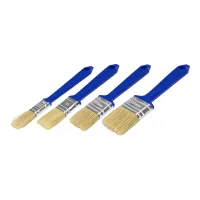Twill fabric 280 gr/m2



- For epoxy and polyester
- Pliable glass fabric
- Approx. 0.45 mm layer thickness
Twill fabric is a specially woven glass fabric, perfect for laminating round shapes. At Polyestershoppen this fabric is available in weights of 160 gr/m2 and 280 gr/m2. The heavier the fabric, the higher the layer thickness and the heavier and stronger the end product.
Due to the higher weight, it can be difficult to laminate this fabric in complex shapes. Therefore, it can be wise to use multiple thin layers instead of one thick layer.
Due to the high weight of this fabric, it can be difficult to laminate the fabric in complex shapes. Therefore, it can be wiser to laminate multiple thin layers of fabric instead of one thick layer. This twill weave has a weight of 280 gr/m2, is 100 cm wide and can be processed with polyester resin, vinylester resin and epoxy resin.
Features of Twill fabric 280 gr/m2
- Suitable for laminating round shapes.
- Suitable for processing with polyester, vinylester or epoxy.
- Available in 160 gr/m2 and 280 gr/m2.
Specifications
| Application method | Layer thickness | Resin consumption |
| Hand lay-up | 0.47 mm | approx. 361 gr/m2 |
| Wet Bagging | 0.28 mm | approx. 176 gr/m2 |
| Vacuum injection | 0.27 mm | approx. 162 gr/m2 |
Weight: 280 gr/m2
Weave type: twill (2/2)
Width: 100 cm
Compatible with: polyester resin, vinylester resin, epoxy resin
Packaging:
- 1 lm: 100 cm x 1 lm (1 m2)
- 5 lm: 100 cm x 5 lm (5 m2)
- 20 lm folded: 100 cm x 5 lm (4 pieces) (20 m2)
- 20 lm roll-packed: 100 cm x 20 lm (20 m2)
- 100 lm: 100 cm x 100 lm (100 m2, always on a roll)
Suitable for: model making, molded parts, scooter hoods, motorcycle tanks, wood cladding, etc.
Delivery: folded in a bag or rolled in a tube
We have a number of recommendations for working safely with polymers. At Polyestershoppen you will not only find the polymers themselves, but you can also purchase all the protective equipment you need from us. If you have any doubts or questions, please contact our customer service. We can give you advice on how to work safely with polymers.





